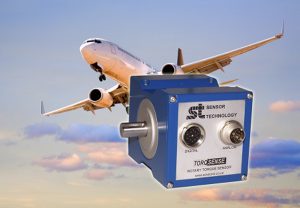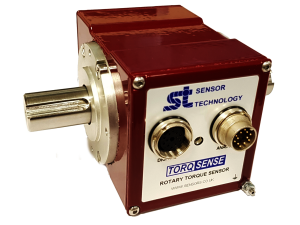An aerospace componentry dynamometer test rig that can run continuously for 3,000 hours and longer has been built by Manchester’s Automated Technologies Ltd, to its philosophy of using as many British-made components as possible.
Among the key components are a TorqSense transducer, made by Sensor Technology of Banbury, and a variable speed drive made in mid-Wales by Invertek. Automated Technologies is a design and engineering company which develops novel automated solutions, innovative product designs, prototyping programmes and solutions for process problems. Over its many years’ experience developing new technologies for demanding clients in all the major sectors of industry, it has come to rely on UK manufacturing, as Chief Engineer Chris Baxter explains:
“Building bespoke machinery and developing prototypes, as we do, is a very collaborative process. Quite often we need considerable support from our suppliers as we work through a knotty problem or two; sometimes this means an intense hour long engineer-to-engineer phone call, or a visit to their premises. It is hardly surprising that this is easier with local companies.”
“Of course, it is also nice to think that we are doing our bit to support the nation’s engineering base.”
 With its history of innovation, Automated Technologies was a natural choice to design and build the dynamometer. With the core requirement for 3,000-hour continuous testing (day and night for over four months), Baxter knew that the rig would have to be very robust and that simplicity would improve the overall reliability. The basic design is that a motor drives the test piece against a load in a closed loop control system and the TorqSense provides feedback by measuring its performance in terms of torque and speed. Variations in the performance data over time indicate the level of wear and tear the component is experiencing and from this safe working lifetime profiles can be developed. The data is logged to a database to allow trending to be mapped. Also a web based real-time display allows live parameter viewing remotely.
With its history of innovation, Automated Technologies was a natural choice to design and build the dynamometer. With the core requirement for 3,000-hour continuous testing (day and night for over four months), Baxter knew that the rig would have to be very robust and that simplicity would improve the overall reliability. The basic design is that a motor drives the test piece against a load in a closed loop control system and the TorqSense provides feedback by measuring its performance in terms of torque and speed. Variations in the performance data over time indicate the level of wear and tear the component is experiencing and from this safe working lifetime profiles can be developed. The data is logged to a database to allow trending to be mapped. Also a web based real-time display allows live parameter viewing remotely.
TorqSense sensors, which are covered by patents, depend for their operation on surface acoustic wave (SAW) transducers. These transducers comprise two thin metal electrodes, in the form of interlocking ‘fingers’, on a piezoelectric substrate such as quartz. When an RF signal of the correct frequency is applied to the transducer, surface acoustic waves are set up and the transducer behaves as a resonant circuit.
The key feature, however, is that if the substrate is deformed, the resonant frequency changes. When the transducer is attached to a drive shaft, the deformation of the substrate and hence the change in resonant frequency will be related to the torque applied to the shaft. In other words, the transducer, in effect, becomes a frequency-dependent strain gauge.
Since the transducers operate at radio frequencies, it is easy to couple signals to them wirelessly. Hence, the TorqSense sensors incorporating the SAW transducer technology can be used on rotating shafts, and can provide data continuously without the need for the inherently unreliable brushes and slip rings that are often found in traditional torque measurement systems.
This simple wireless operation was very attractive to Baxter’s practical mind. It means that test runs can be set up quickly and easily and in long-term tests, a radio frequency link is likely to prove far more reliable than a flimsy slip ring.
Given the long duration of the test regimes, Baxter was concerned that the dynamometer would end up consuming a large amount of electricity and thereby be costly to run. However, he was able to mitigate this to a large degree by using a generator as the driven load. The power thus created could be fed back to the motor in a closed loop configuration, reducing the motor’s power draw from the mains.
The Invertek variable speed drive is used to alter the speed of the motor, and thereby the operating conditions of the component. Speed profiles can be used to emulate the cyclic nature of use experienced during multiple flights, or to subject the components to extreme testing to determine their failure mode characteristics. Significantly, the generator was required to be of brushless design and hence had to produce a three-phase output, and the motor is also a three-phase unit as these are better balanced to reduce susceptibility to harmonics in the drive-train as the machine speed is varied.





